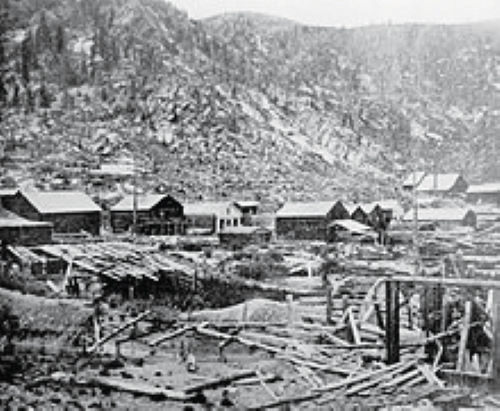Wood Sawyer 1905 painting courtesy of Frederick McCubbin.
By Lyn Forde – President/Research Officer of St Marys & District Historical Society Inc.
AT South Creek on the 22nd of January 1859 at Regentville William Watson was indicted for having unlawfully and feloniously killed and stabbed Simon Ryan. The prisoner pleaded not guilty and was undefended. Mr Butler conducted the case for the Crown. It appeared that the prisoner had been one of a party of sawyers residing beyond Penrith. They had been into Penrith and were returning when the crime for which the prisoner stood charged was committed. Bridget Pidge said that on the night of the 11th January at about 11 o’clock the prisoner and several other men came with her husband to their house when she was called up from her bed and made them some tea then they then left but after a few minutes the prisoner and a coloured man named George Williamson returned then she and her husband retired to rest leaving the two men and the deceased Simon Ryan who had been living with them and not long after she heard a noise outside the house and got up and called her husband who went outside and saw the deceased lying on the ground with blood flowing from two wounds. William Pidge the husband of the last witness corroborated the evidence given by his wife and some additional particulars that he found Simon Ryan lying on the ground wounded and dead and he did not see the prisoner then but shortly afterwards when he was taken into custody by sergeant Warren. He found an auger belonging to him lying about twenty-two yards from the body and the handle was out of it and lying at some distance from the auger. He said that the party were working further up the country and had called at his house to get a cup of tea that was prepared by his wife and after the party left again. Bridget Pidge recalled she had not heard the prisoner make any remarks about the auger. George Williamson a coloured man said he was one of the party at Pidge’s and recognized the prisoner as one of the party and they had been drinking and was drunk. When the party left he fell on the grass and the prisoner took him back to Pidge’s hut and he then went to sleep but was roused shortly after and on going outside saw Ryan lying on the grass dead. The prisoner William was his mate and they were both sawyers. Police sergeant at Penrith Charles Warren said that on the night of 22nd January he received information that a man named Ryan had been stabbed and was lying dead and before arriving at the place where the dead body was he met the prisoner who told him that he was the man who had stabbed Ryan and said to him that the deceased was about to strike him with an auger and in his passion he stabbed him and on searching the prisoner at the watch-house a clasp knife dropped on the ground as though it had been between his belt and trousers. He picked it up and found it was covered with blood. Dr Haylock the duly qualified medical practitioner of Penrith said that on being called he examined the body of the deceased that he found covered with a sheet and lying about twenty yards from the Pidge’s hut and on examination he found two wounds, one on the right side that had penetrated through the heart and the other was not so deep and might not have proved fatal. The wounds might have been caused by the knife produced and he saw the prisoner who seemed very excited and he expressed great sorrow for the rash act when he found that Ryan was dead. The prisoner in reply to his Honor stated that after Mr and Mrs Pidge had retired some words were spoken between the deceased and himself about as to who was the best saw-keeper and the deceased got excited and pushed him out of the door. He then came out with an auger (the handle of which he had beaten out against a block of wood) and he was in the act of striking him when the (prisoner) defended himself against the attack with one hand and stabbed the deceased with the other. Great sorrow was evinced by the prisoner in the recital of this statement. His Honor in summing up said it was a most distressing case. There appeared no doubt but that the crime was unpremeditated and the subsequent conduct of the prisoner in giving himself up to the Constable showed no wish to evade the punishment due to such a crime. From the evidence it appeared they had been drinking but that could not be pleaded as an excuse or there would be no safety for life. The jury then retired and after a few minutes’ consultation returned with a verdict of guilty but with a strong recommendation to mercy and sentenced to six weeks hard labour in Parramatta gaol. The turnkey in charge of the prisoner since his arrest was called in and spoke of the quiet orderly conduct the prisoner had maintained since he had been in his custody. His Honor said he would defer passing sentence until he heard the medical testimony on the state of the prisoner’s mind and later remanded him accordingly as verdict guilty of LARCENY.
Source: Sydney Morning Herald – 10th February, 1859






